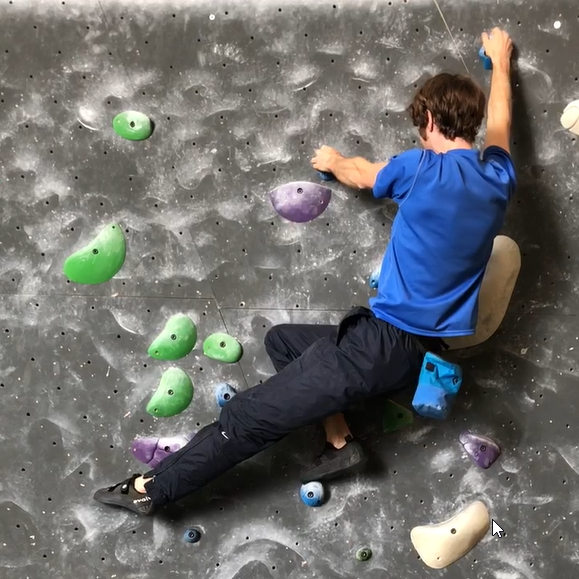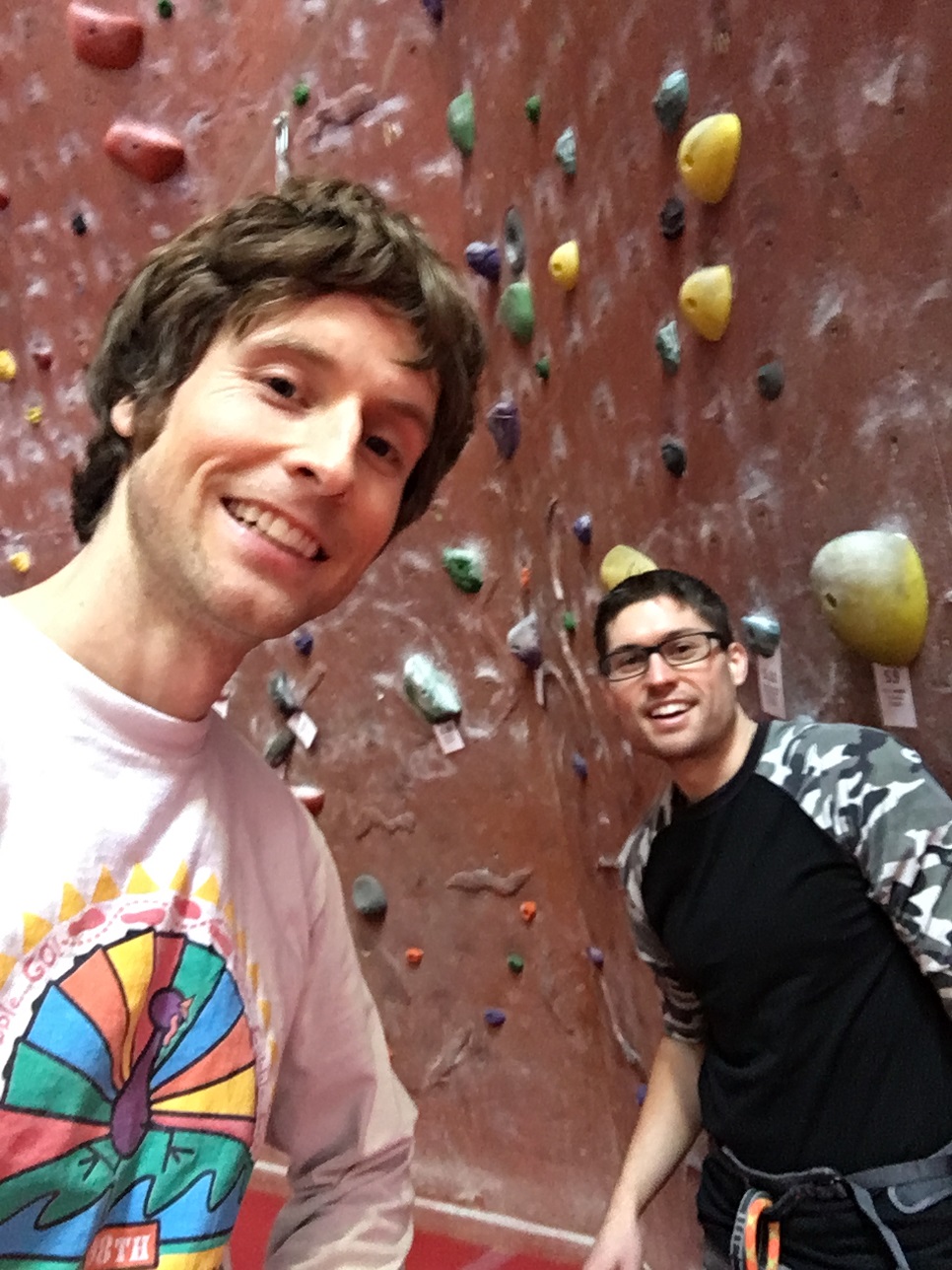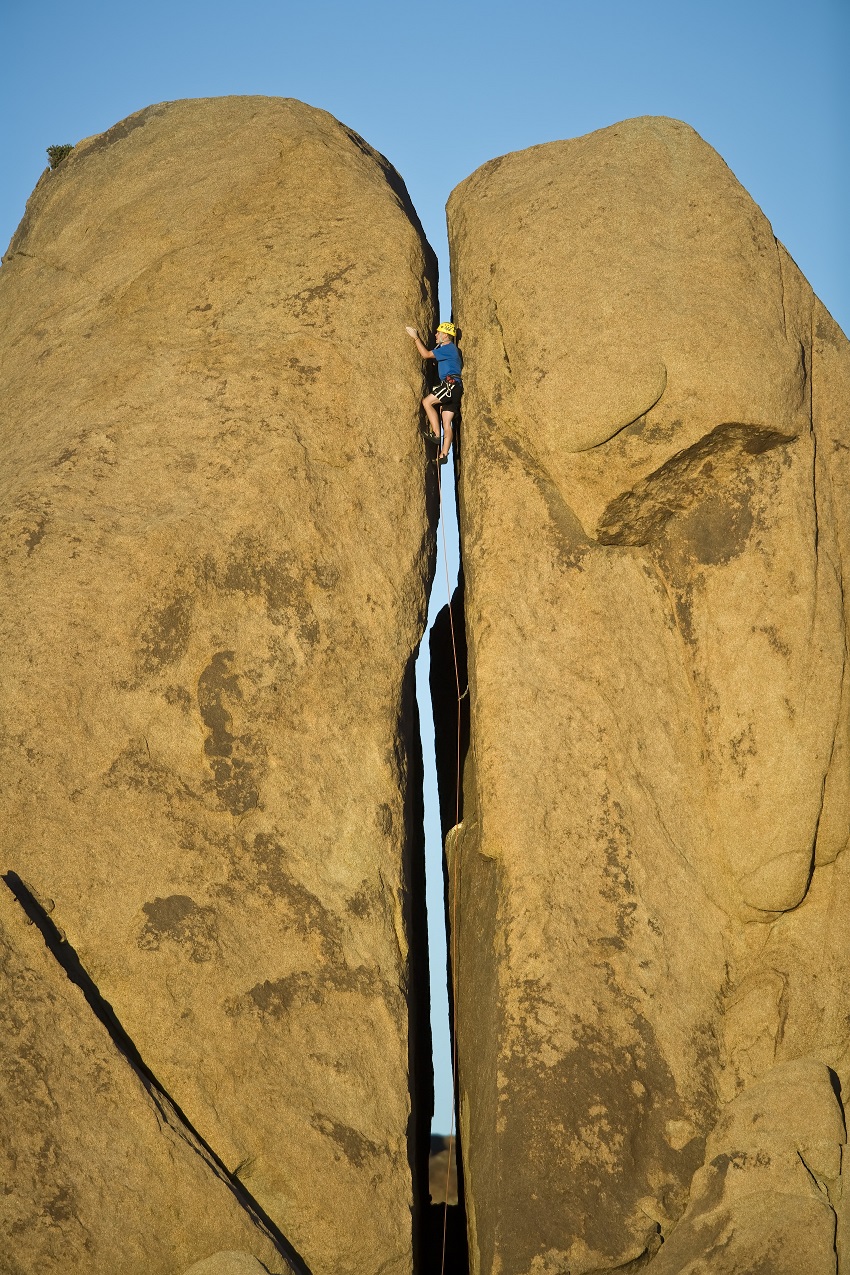These days, children can join many sports teams — from baseball to hockey, there’s an activity for everyone. Have you considered getting your kids into rock climbing? It provides many teachable moments and serves as a fun outlet. Plus, it’s cost-effective!
(featured image of Brooke Raboutou in Hueco Tanks Texas. Photo Meagan Martin)
The Benefits of Getting Your Kids into Rock Climbing
Rock Climbing offers advantages you can’t find elsewhere. Children learn both by example as well as through independent problem-solving. Once they start ascending the rock, their body and mind begin learning new lessons.
Through rock climbing, you can expect your kids to discover:
- Practical outdoor skills.
- Decision-making and problem-solving abilities.
- Self-reliance and self-confidence.
- Healthy life choices.
- Bravery and discipline.
Many people think rock climbing isn’t a team sport. While mountaineering enthusiasts often complete solo treks, in the sport of rock climbing you always need a partner to belay and it’s common for rock climbers to organize group excursions as well. As your kids learn how to lean on themselves, they’ll also learn how to support others.
Brooke Rabatou started climbing about the same time she started walking. Learn about this climbing prodigy’s younger years in the video below.
Tips for Beginning Rock Climbing
If you want to explore rock climbing with your children, check out these tips on how to begin:
1. Develop skills at home
Most kids want to scale your home’s bookcases by the time they’re 2 years old. That said, most gyms won’t allow children to join until they’re at least 5 years old. For young children, it may be best to explore clinging at home and at local parks before you pay for classes.
For older kids and adults quite a bit of training and skill development can occur right at home as well.
Whether your children want to use their backyard playset or find a natural formation, let them work on balance and agility at their own pace — with supervision, of course. This process also allows space for your children to learn how to respect nature as a whole. A passion for the outdoors is essential when rock climbing.
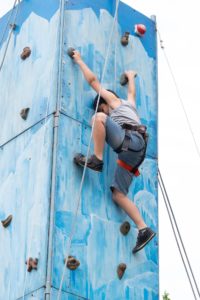 2. Join an indoor gym
2. Join an indoor gym
Your kids are enjoying the exploration of climbing and have even started visiting the gym it may be smart to get a gym membership. Some rock climbing gyms offer programs where children can join recreation or competitive teams. If you can’t access a gym with kid-friendly classes, try learning with them. See MojaGear.com’s list of Best Rock Climbing Training Books. While we don’t recommend strength training for young kids, the skills sections of these books are good for all ages.
Climbing is a great opportunity to teach kids about respecting others and respecting common spaces. Kids who run around a busy gym pose a danger to themselves, to other rock climbers, and to the climbing environment. Other climbers may be too focused to notice them.
3. Choose the best equipment
While there are definitely some upfront costs for gear, rock climbing isn’t nearly as expensive as some other hobbies. You can expect to pay a few hundred dollars upfront for rock climbing gear that should last your family for years to come. Additionally, exploring nature is usually free. While the safety critical items should always be purchased new you can buy some used equipment at a big savings. Kids grow so fast that often small sized climbing shoes and clothes can be purchased used at a great deal.
Everyone should have a harness, shoes, and helmet. Before you head to an outdoor course, pick up a rope, belay and a few quickdraws. Test your equipment before you head into a gym or try an outdoor crag. You should also teach your kids how to use the gear by themselves.
When it comes to gear recommendation for new climbers MojaGear.com has the best resources.
Related Post: Best Rock Climbing Gear for New Climbers
4. Find a Rock Climbing Group

Here’s a simple way to familiarize your kids with rock climbing. Whether or not you’ve rock climbed before, a group can help your children meet new people and learn to climb much fasters. Most cities have established casual meetups where enthusiasts can practice together and plan trips. Talk with the rock climbing gym manager or owner to recommendations on local groups. Chances are that your area already has several different groups of climbers that chat on line and take trips together.
Plus, it always helps to have more than one supervisor on hand. After all, a belayer can’t simultaneously serve as a babysitter.
5. Locate an easy spot to start outdoor climbing
After you and your kids have become comfortable within a gym setting, it’s time to explore the outdoors. Of course, you won’t want to head straight to El Capitan. Instead, you should look around your area for some easy routes. Especially, the first time make sure you have trained help. Either another experienced climber or a trained guide. Use resources like thecrag.com and mountainproject.com to search for the difficult and the directions to the easiest crags. Not only should starter spots have easier climbing but they should not have any other potential hazards, like rock slides or iffy terrain.
Note: outdoor climbing is much harder than indoor climbing. Expect to be very confused on how to climb even the easiest rated climbs. And don’t worry, it’s normal.
Establish a base camp. Use this area as a safe space where you can relax, eat and play — and always remember to clean up after yourself so you leave no trace of your presence. You should also choose a location that doesn’t require an extensive hike, called an approach. If the approach is 3 miles to the crag (rock where you will climb), your kids won’t have enough energy for rock climbing.
6. Bring more than just climbing gear
When you first venture into rock climbing, make the experience as fun as possible. While you should always bring along the correct gear, try not to forget toys and snacks either. Every parent knows their younger children don’t always have the best attention spans. If you can set aside time for breaks where you can refuel and rest, they’re more likely to focus when they are actually climbing.
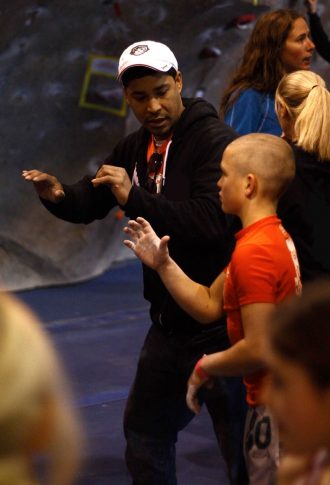
You don’t have to be a pro climber and coach like Obe Carrion to help your kids get started rock climbing.
This break time proves helpful for moms and dads, too. When you can switch off belaying and supervising with another adult, it’s more enjoyable for everyone involved. Fortunately, as your kids grow older, they won’t need to take as many opportunities to rest.
7. Teach as you go
If you love rock climbing, it’s easy to become a little frustrated when your kids don’t grasp concepts right away. Try to keep things fun. Make a game out of the climb. Here are some game ideas. If you really like climbing be prepared for you kids to be done for the day after just a couple climbs. Otherwise, climbing will lose its appeal. When everyone’s out on the crag, be sure to help them through more intricate moves. Practice different scenarios so they know what to do when they reach the top.
Your efforts today will ensure your kids become more familiar with rock climbing skills and safety. Eventually, they’ll be navigating formations without as much help from you.
Remember to use these tips to get your kids into rock climbing
Getting your kids into rock climbing can create a special bond of trust and depth between you and your kids. It also teaches essential life lessons that translate into other situations. If your kids express an interest in rock climbing, try these suggestions to get started.


